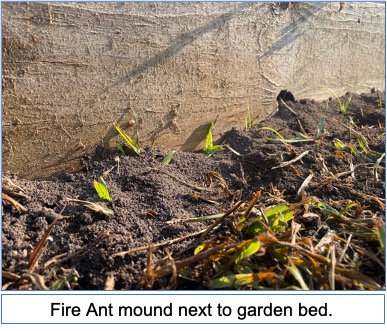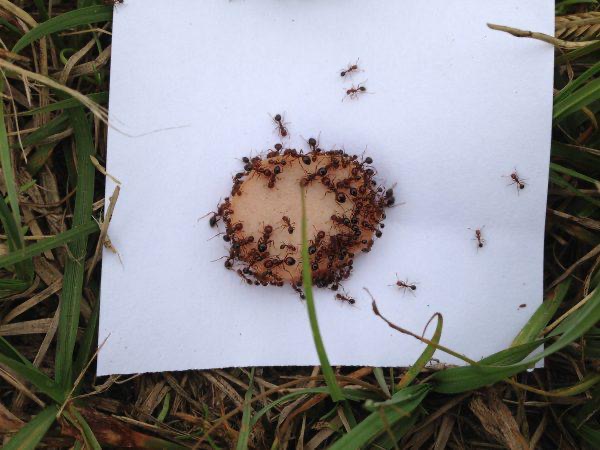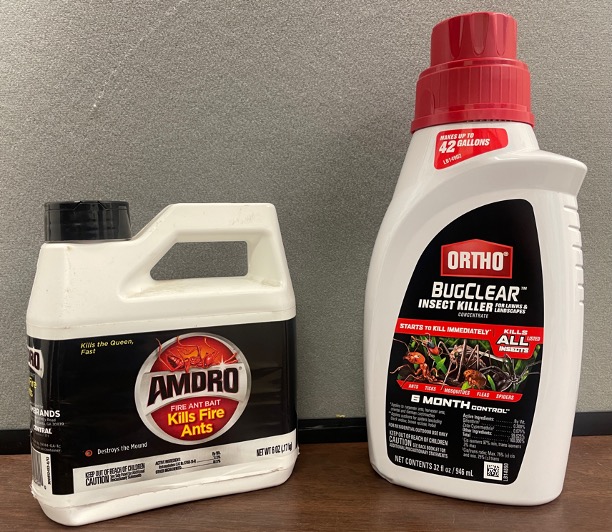The Ants Go Marching Into Fall
go.ncsu.edu/readext?886726
en Español / em Português
El inglés es el idioma de control de esta página. En la medida en que haya algún conflicto entre la traducción al inglés y la traducción, el inglés prevalece.
Al hacer clic en el enlace de traducción se activa un servicio de traducción gratuito para convertir la página al español. Al igual que con cualquier traducción por Internet, la conversión no es sensible al contexto y puede que no traduzca el texto en su significado original. NC State Extension no garantiza la exactitud del texto traducido. Por favor, tenga en cuenta que algunas aplicaciones y/o servicios pueden no funcionar como se espera cuando se traducen.
Português
Inglês é o idioma de controle desta página. Na medida que haja algum conflito entre o texto original em Inglês e a tradução, o Inglês prevalece.
Ao clicar no link de tradução, um serviço gratuito de tradução será ativado para converter a página para o Português. Como em qualquer tradução pela internet, a conversão não é sensivel ao contexto e pode não ocorrer a tradução para o significado orginal. O serviço de Extensão da Carolina do Norte (NC State Extension) não garante a exatidão do texto traduzido. Por favor, observe que algumas funções ou serviços podem não funcionar como esperado após a tradução.
English
English is the controlling language of this page. To the extent there is any conflict between the English text and the translation, English controls.
Clicking on the translation link activates a free translation service to convert the page to Spanish. As with any Internet translation, the conversion is not context-sensitive and may not translate the text to its original meaning. NC State Extension does not guarantee the accuracy of the translated text. Please note that some applications and/or services may not function as expected when translated.
Collapse ▲Now that fall has arrived, this maybe your last opportunity to take action against fire ants before colder weather forces these insects deeper underground.
For those unfamiliar with fire ants, they can sting. Within 24 hours after a person is stung, a pustule-like sore often forms at each sting site which usually itches extensively. For many this is just a nuisance, but for those who are allergic this can be deadly. Fire ants can be found in many locations within Pamlico County including sidewalks, lawns, fields and roadsides. During periods of hot, dry weather (like this summer), fire ant colonies retreat underground and may go undetected for extended periods. However, as rain and cooler weather increases into early fall, these colonies will rise to the surface, aiding in detection and offering a final opportunity for control before winter weather forces them back deep underground.
A common approach to fire ant control involves a two-step treatment using fire ant bait and individual mound treatments. First, ant bait products are broadcast near active mounds, which the ants will forage for and feed upon, spreading the active ingredient among the colony. Many of these bait products (Amdro Fire Ant Bait, Extinguish, etc.) contain active ingredients that prevent growth or reproduction resulting in death of insects. Bait products work best when conditions are dry and insects can actively forage. To test for actively foraging fire ants, place pieces of cut hotdog or potato chips around the mound. If these items are quickly fed upon by foraging ants, then so will your bait. If, however, these food items do not elicit a response from the fire ant mound, then you may need to wait until conditions are more conducive to active foraging. This process of bait application and foraging may take several days, so be patient. Follow-up mound treatments may need to occur 5-7 days later, targeting the remaining visible mounds that are still active. Mound treatments (Ortho Fire Ant Killer, Sevin, etc.) tend to work in hours to days. The active ingredients in these products require direct contact with fire ants, with some products requiring water to be applied to move the chemical down into the mound for greater contact. Without the addition of water, the pesticide product may simply sit on the mound surface where few fire ants will come into contact (most activity is underground).
When using insecticides, ALWAYS READ AND FOLLOW THE LABEL DIRECTIONS. This statement is emphasized because the efficacy of your application hinges on your ability to follow proper application methodology. Citizens should understand that a single application will not result in complete eradication of fire ants. Fire ants are constantly moving and many colony locations are not easily identifiable from the soil surface. What few insects you control today can easily be replaced by other insects tomorrow. Your goal should be to manage the population of fire ants within your landscape to a level where human interactions are reduced. All pesticide labels will contain additional information on safety precautions and hazards that exist to pets and wildlife. In general, following the instructions on the pesticide label will help to ensure safety for all.
For more information on fire ants and their control, please contact Daniel Simpson at (252) 745-4121 or daniel_simpson@ncsu.edu. You may also visit the NC State Extension Fire Ant Control note.






